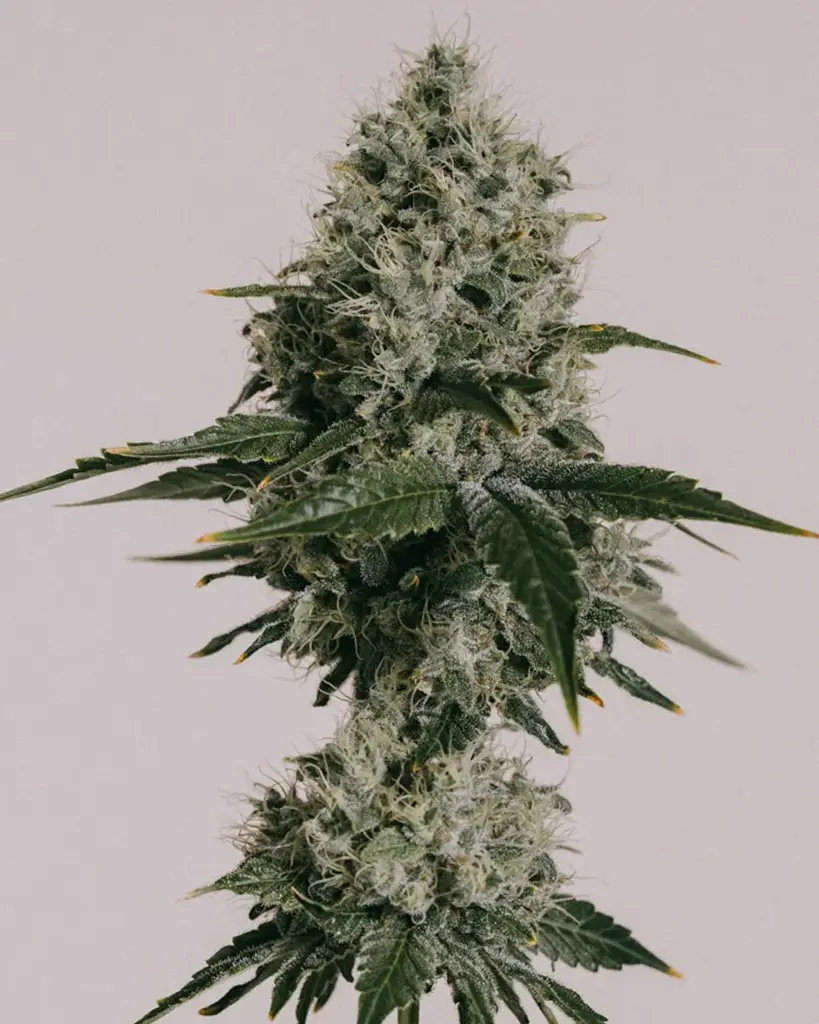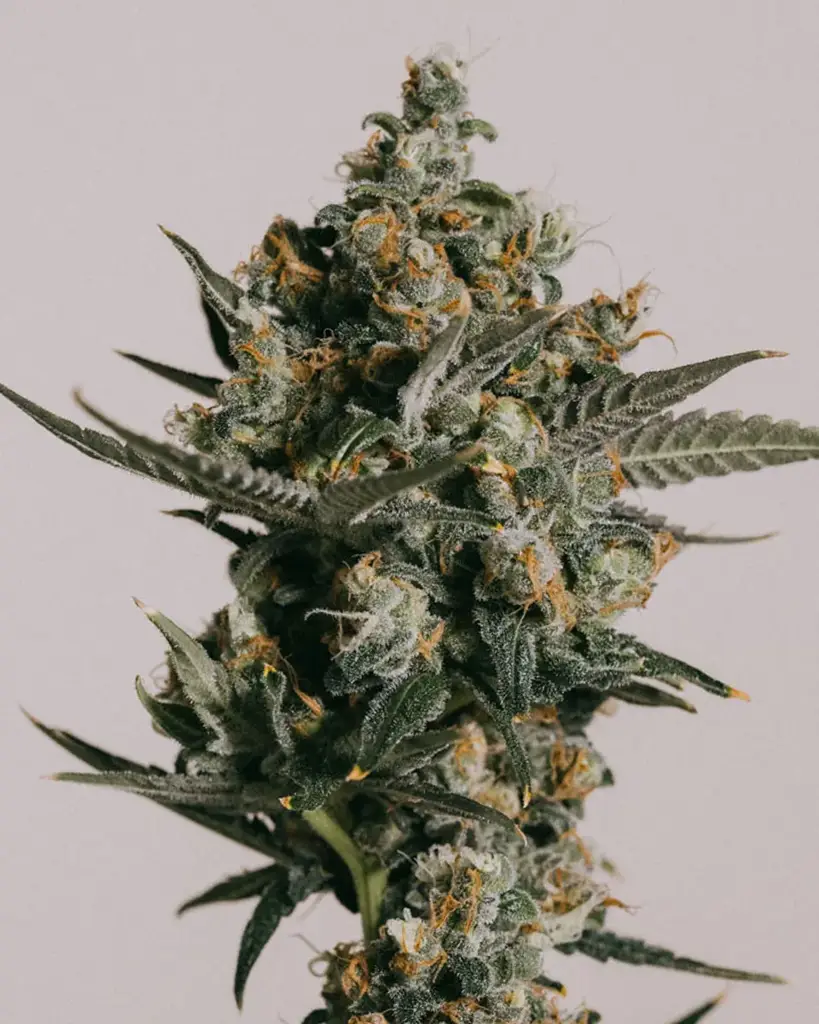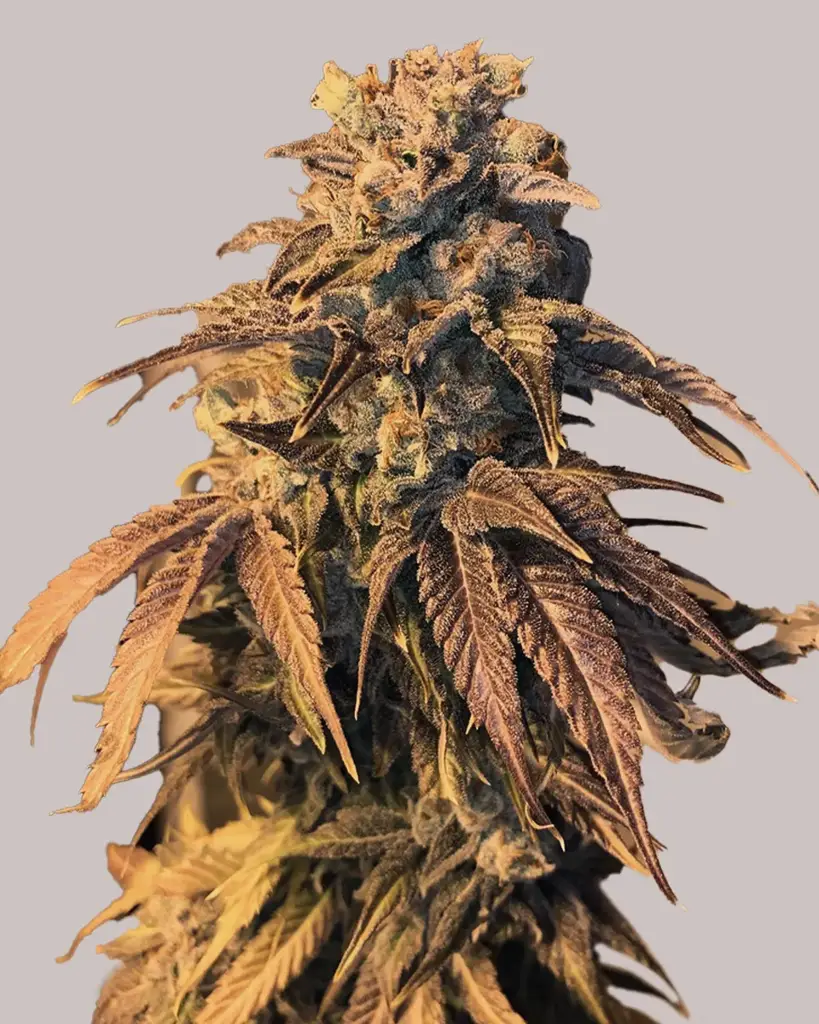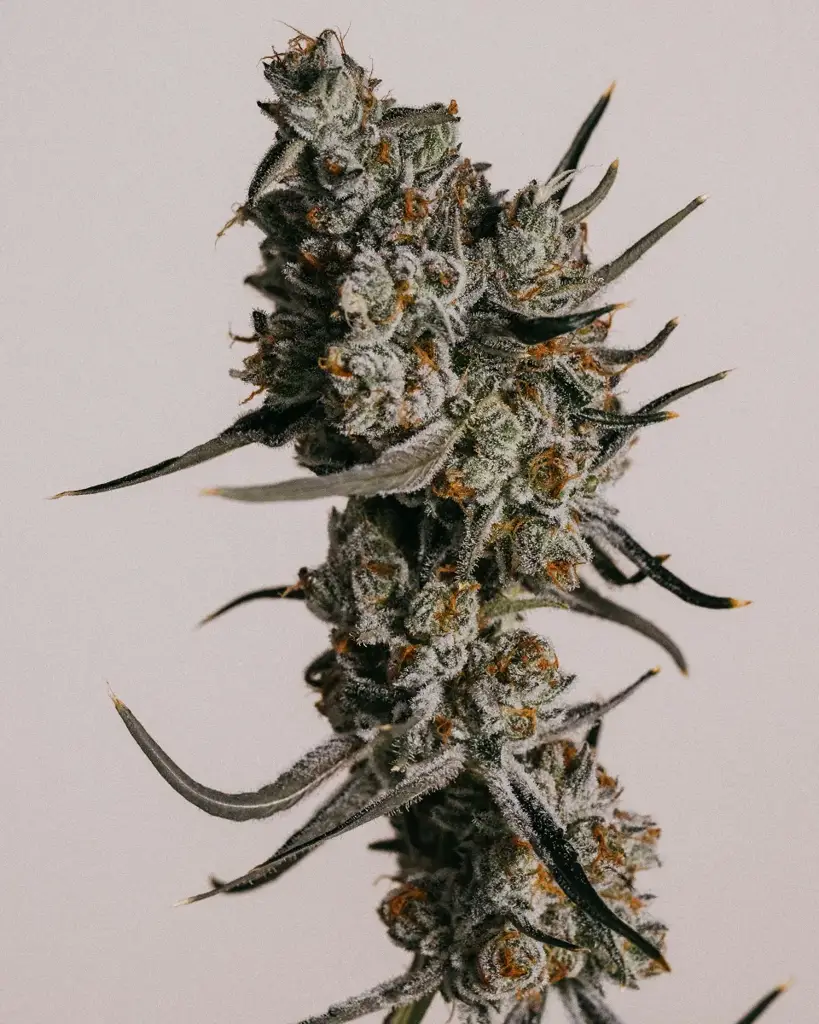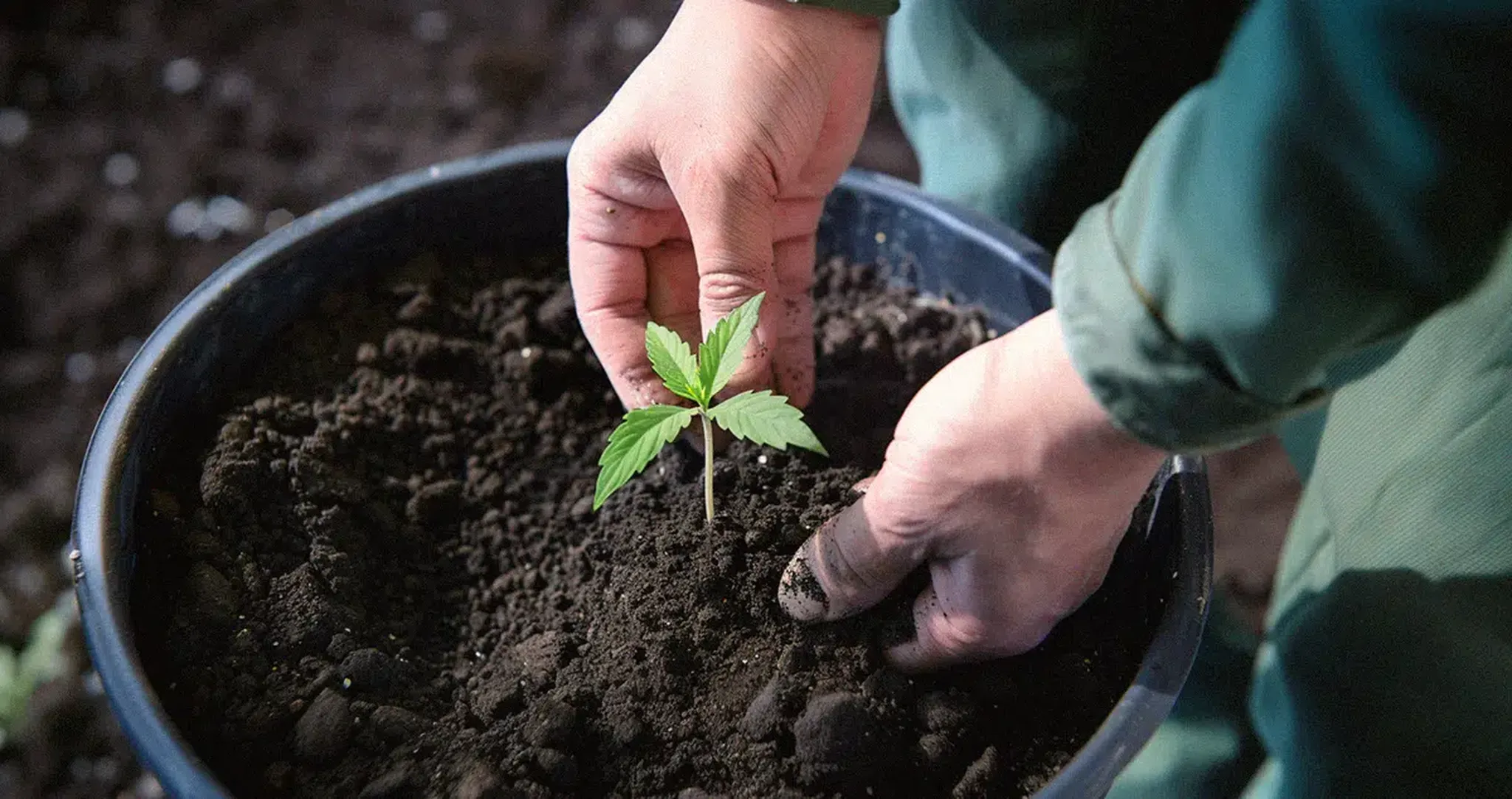
Things To Consider When Growing Outdoor Cannabis in Soil
Growing cannabis outdoors in soil is a great way to develop your green thumbs. Once you’ve chosen to cultivate in soil, a few good decisions along the way will make the final result one you can take pride in. I love growing weed in soil, and I think you will too. Let’s dig in!
Table of contents
- Why Soil Matters for Outdoor Cannabis
- Using The Soil in Your Backyard: Pros and Cons
- Raised Beds and Containers for Growing Cannabis Outdoors
- Optimizing Soil For Outdoor Cannabis Plants
- Easy Outdoor Soil Mix Recipe for Beginning Cannabis Growers
- pH and Nutrient Management Outdoors
- Dealing with Common Outdoor Soil Issues
- Organic Solutions and Composting for Outdoor Cannabis Soil
- Essential Qualities of Good Outdoor Cannabis Soil
- Top Tips
Why Soil Matters for Outdoor Cannabis
Cannabis is a hearty plant. If it can grow wild in scrubby patches along country roads, the bar for bare-necessities in the soil must be pretty low. Of course, there’s a reason most folks scoff at “ditch weed” and aim higher.

The character of the soil your plants grow in should mirror the high-quality yields you hope to harvest. It’s not just dirt or a mix of ingredients that resemble soil in structure, but a healthy substrate that will nurture and support the roots of your cannabis plant. It’ll be bursting with life and rich in nutrients, which the plant uses to create all of its cannabinoids, terpenes, and other phytochemicals – basically, the ‘nutrients’ we receive from our plants.
Using The Soil in Your Backyard: Pros and Cons
You can use the existing soil in your backyard, but I recommend you don’t, especially during your first few times growing cannabis in soil.
It’s likely the soil in your backyard is lacking some of the features that would make it great for cultivation. A culture of lawn management practices built around regular mowing and single-species preference (grass, unfortunately, not the groovy kind) has likely made a top layer that’s pretty compacted.
The dirt itself is probably also not a host to the diverse network of biology that would support healthy cannabis growth. It could possibly even be filled up with chemical residues and heavy metals that will accumulate in your flowers. If that’s a concern, you can usually get this tested fairly cheaply by sending a sample to a local agricultural lab.
On the plus side, you can certainly transform a mundane patch of turf into a beautiful, bountiful garden. It does take work, and time, for a typical backyard to be renewed as a growing space.
Luckily, you can use containers or build raised beds to enjoy the benefits of soil growing now, and take steps toward fixing and improving the surrounding topsoil as you go.
Our Bestsellers
Raised Beds and Containers for Growing Cannabis Outdoors
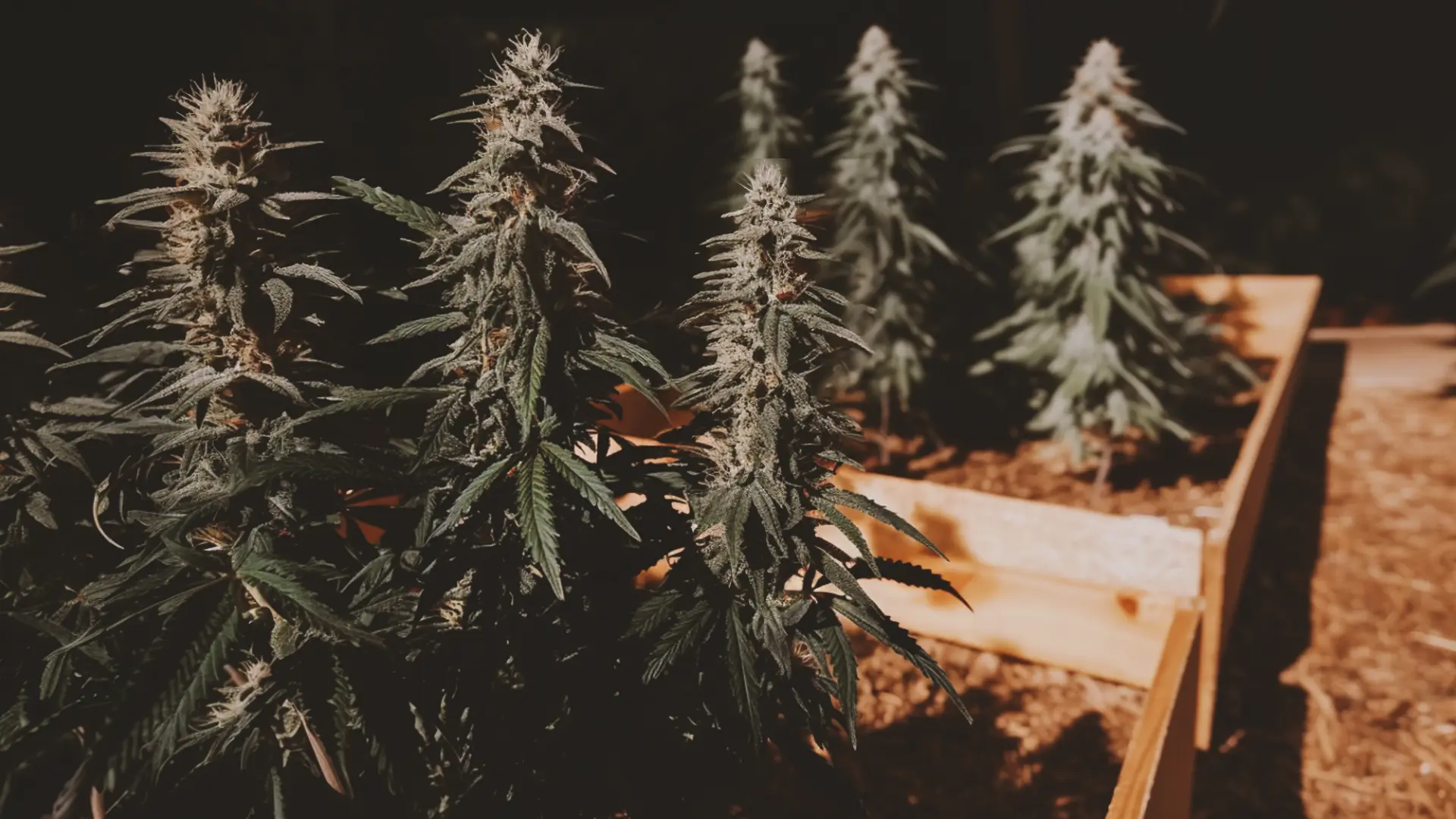
Build raised beds or choose containers to suit your environment and your abilities. I generally do a mix of both. I put some sturdy ‘sure winners’ (fast-finishing, female plants) in the raised beds and plant others in pots for the ease of moving them. This way I can grow in the “non-permanent” spots that get the most sunlight at different times of the season, and bring the smaller plants in under cover during extreme weather, for example.
In both situations, I curate and condition the soil specifically for cannabis growing.
Optimizing Soil For Outdoor Cannabis Plants
Outdoor soil can be improved with some key ingredients to support your cannabis grow.
The main structure of natural soil comes from the minerals that form sand, silt, and clay, combined with decomposed organic material (“humus”).
You can mimic or improve on existing soil by using peat moss or loose coco coir as the ‘bulk’ of the substrate. Be sure your soil is good at holding water when you want it, and letting it flow away when it’s in excess. Vermiculite and perlite (those little white flecks you normally see in potting soil) are typical choices for this task.
Mixed in with these ‘inert’ ingredients, you’ll want to include some already-decomposed organic materials. In nature, microorganisms break down old, dead leaves and other materials into plant-available nutrition. Adding well-aged compost, worm castings, and fermented plant brews are ways to benefit from those processes even in “brand new” soil.
 Compost tea being made by one of our forum growers: HippieRunner1
Compost tea being made by one of our forum growers: HippieRunner1
Bring in more life, in the form of beneficial bacteria and fungi (mycorrhizae), to further improve the quality and character of your soil.
Easy Outdoor Soil Mix Recipe for Beginning Cannabis Growers
When doing your first outdoor soil grow, I suggest bringing in the experience of experts – why reinvent the wheel? There are many good pre-made soil mixes available from the local gardening center. If it’s an option, buy from someone with experience growing cannabis – support the community and buy your pre-mixed soil from a local, specialized cannabis grow store.
Since cannabis has two basic growing phases, I like to start with a potting soil that does not come with any pre-mixed fertilizers, but is blended with vermiculite or perlite. If it’s not charged with mycorrhizae, I make sure to add some, as well as beneficial bacteria, when I’m sowing seeds or transplanting already-growing plants.
For plant-powered nutrition, I suggest adding about a cup each of alfalfa, cottonseed, and soybean meal for every 4 cubic feet of soil. To provide a source of trace minerals, include a cup of volcanic or glacial rock dust. Composted or powderized seaweed is another excellent ingredient that promotes fast growth.
All of this makes a base of healthy, longer-term support for your plants. You’re still responsible for balancing pH and feeding your cannabis according to its changing needs throughout the season.
Outdoor Grow?
pH and Nutrient Management Outdoors
Maintaining pH in the slightly acidic (6-6.5) range makes sure nutrients in the soil are available for your plant's roots to absorb. Depending on what went into your original mix, you might need to add some lime or gypsum to create a cannabis-friendly soil before introducing fertilizers.

Good drainage is critical to nutrient management outdoors, so make sure your soil allows excess water and nutrient by-products to flow away from the roots of your plants.
Follow regular feeding schedules for NPK blends made to work with soils, adjusting for the veg and bloom periods. Top-dress your plants with the base nutrients I mentioned above about once a month, and remember that newly-made soil mixtures, especially those without a lot of microbial and other small life (e.g. earthworms, beneficial nematodes), can be depleted of nutrients by heavy rains.
As you go, you’ll learn how to feed the soil community, not only the plant, and create a more abundant environment for growth.
Dealing with Common Outdoor Soil Issues
Compaction
Can result from: walking on the garden (put stepping stones in big beds if you need access), flood/downpour (use downspouts to redirect excess, locate pots where heavy rain doesn’t hit them and water doesn’t pool), or containers that are too small (based on genetics info from your seed provider, estimate the final size of your plant and plan accordingly).
Soil-borne diseases
Can result from: pH issues (test and amend your soil or liquid nutrient solution accordingly), lack of aeration (see compaction, above), fungal spores germinating on plant surfaces (avoid splashback when watering)
Pests
Can result from: lack of diversity in the garden (plant strong-smelling herbs, flowers that bloom and attract beneficial insects), inattention to IPM (schedule inspections and regular treatments with beneficial microbes and herbal extracts)
Nutrient imbalances/deficiencies
Can result from: neglecting to keep up with plant’s growing needs (adjust the amount of nutrients given as the plant gets bigger), build-up of salts in the soil (flush regularly with plain water), pH issues (top-dress soil with amendments and/or adjust pH of nutrient solution).
Organic Solutions and Composting for Outdoor Cannabis Soil
Cup-winning growers, known for exceptional terpene and cannabinoid content in their buds, are often committed to using organic and regenerative practices. There’s nothing especially complicated about natural farming techniques, and by comparison, there’s more room for error than the rigorous demands of hydroponics or similarly high-performance, controlled environment growing.
Begin on a comfortable scale. Even just by composting your kitchen scraps, you’ll be transforming an available “waste” into food that you didn’t have to buy in a bottle/bag. Learn to make IPM solutions and brew beneficial “teas” from common plants. Again, this results in cutting costs and reducing the environmental burden of your grow.
Essential Qualities of Good Outdoor Cannabis Soil
I like to think of the basics of good outdoor soil through the broad lens of our three main branches of science.

Physics, i.e. Structure and Temperature: Quality soil maintains an environment where water, air, and microbes can move freely, and root systems feel encouraged to expand and can anchor the plant. It’s made of particles of different sizes, and isn’t compacted.
Soil temperatures shouldn’t be allowed to go over 86°F (30°C), to protect the living microbes from getting ‘cooked’, to prevent water-use issues, and to maintain good structure. Remember that both sun and wind will dry out the soil. Use dark-colored pots and mulches for heat collection and retention, or light-colored ones to cut down on excess heat, depending on what’s more of an issue in your area.
Biology, i.e. Life: Good outdoor soil is full of life. Intentional introduction of beneficial bacteria and fungi gets it started, and eventually, more species will be drawn to coexist with your cannabis. Continuing to give preference to your plants’ needs in the space, while allowing for diversity to build up in the soil, supports the natural processes that lead to healthy, top-quality yields.
Chemistry, i.e. Nutrients and pH: This includes the content of minerals in your soil (and groundwater, if applicable) and the biochemistry of the feeding and immune-system processes of your plants and the other lifeforms in the root zone. When healthy soil is treated using a preference for organic chemistry over synthetics, it can become more vital and rich for growing upon each use.
Top Tips
Aim to always have something photosynthesizing in your soil, in addition to the cannabis itself. Well-paired companion plants stimulate and support beneficial microbial and insect populations. After harvest, sprinkle some cold-weather-friendly seeds on your soil for autumn microgreens (think mâche, spinach, kale). Onion sets are another good choice, especially in raised beds, because even just letting the tops grow into the fall gives you the option to chop those off before winter kills them. They are delicious – use them like scallions/green onions. In the spring, they’ll usually try to re-grow, creating an inhospitable environment for some of the plant pests that bother cannabis and other annuals.
When growing in pots, I like to dump all of my containers (including the cannabis rootballs, if I’m not using them for medicine) into a big bin. I mix everything together, re-amend with seaweed and rock dust, and allow the decomposing microbes to do their work. The following spring, I use this mixture to fill my containers again, or to build or refresh a raised bed, making the most of my investment in the store-bought peat and vermiculite. Tip - Don’t do this if you have issues with soil diseases. Instead, relegate the spent soil to a “quarantine” compost pile and start fresh next season.
Use your senses to get to know the quality of your soil. Look at, smell, and feel what good, healthy, productive soil is like. Learn to assess how wet it is by touch, and how much water it is holding by squeezing some in the palm of your hand. It should always smell pleasantly “earthy”. If you get a sour, rotten, or other off-putting nose-full, something is not right with your soil.
Until next time, may you and your garden keep growing together, ever higher!

Xavier Kief
Xavier Kief, a fierce cannabis advocate & educator, merges science & joy in cultivation. Expert in regenerative growing, mycology & activism






